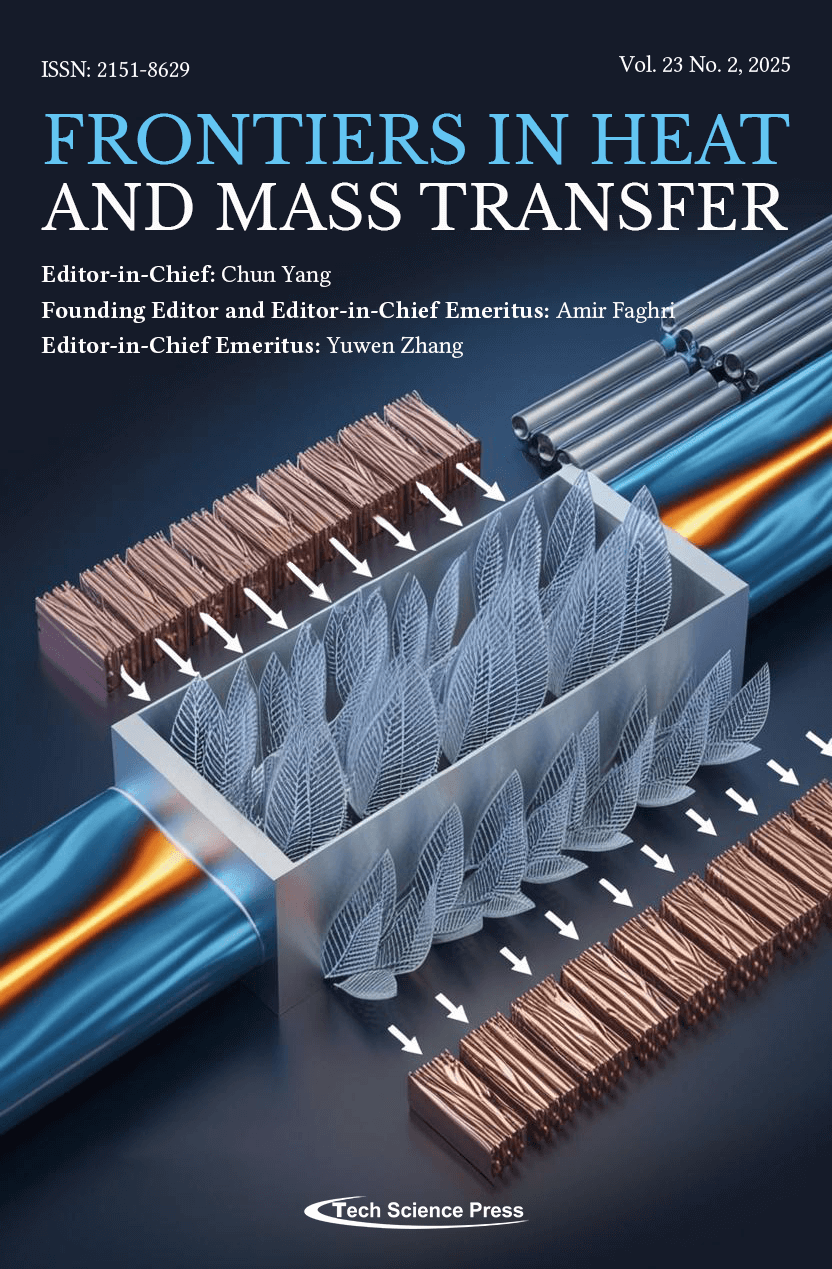
This study proposes eight leaf-shaped pin fin configurations inspired by bionics to enhance heat dissipation. Simulations and experiments show that the Leaf B Staggered Array (LBSA) achieves superior cooling, reducing temperature by 0.72 K and friction by 33.3% compared to cylindrical fins. LBSA also shows the highest thermal-hydraulic performance, improving energy efficiency in cooling applications. This cover image was created using AI-generated content from Canva. The authors confirm that no human likenesses, copyrighted elements, or misleading representations are included in the image.
View this paper